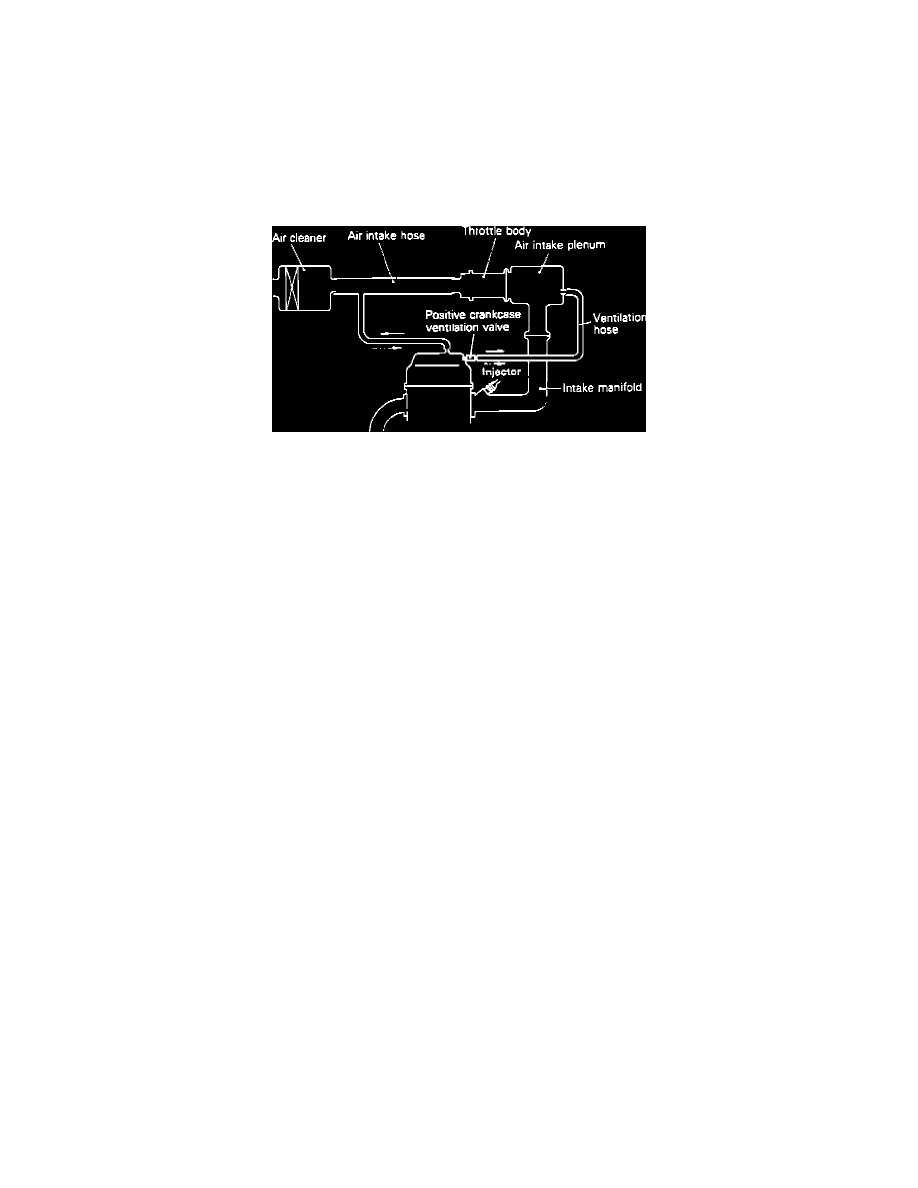Topaz V6-182 3.0L (1992)

Positive Crankcase Ventilation Valve: Description and Operation
The Positive Crankcase Ventilation (PCV) valve is designed to prevent blow-by gases and/or crankcase vapors from being emitted into the atmosphere.
This is achieved by venting a sealed crankcase to the intake manifold, via a regulating one-way check valve.
Blow-by gases and crankcase vapors contain HC, CO and NOx emissions, which result from incomplete combustion, piston rings-to-cylinder walls wear,
and normal engine operation. These gases and vapors are formed when part of the ignited air/fuel charge is forced past the piston rings into the crankcase
by the pressure of combustion.
The PCV valve opening is regulated by an internal spring, intake manifold vacuum, and crankcase pressure. The valve is normally located within a hose
(1/2" to 3/4" O.D.) between the crankcase and the throttle body or intake manifold.
Typical PCV System
While the engine is running, air is drawn into the crankcase from the air cleaner assembly to be mixed with the blow-by gases. As the PCV valve opens,
manifold vacuum and crankcase pressures route the air-diluted blow-by gases into the induction system to be burned.
If the PCV valve should become stuck closed, the system routes excess crankcase pressure and vapors back through the ventilation hose and air cleaner
assembly into the induction system.
NOTE: Some vehicle models utilize the PCV valve connection as an inlet for vapors being purged from the Charcoal Canister.
